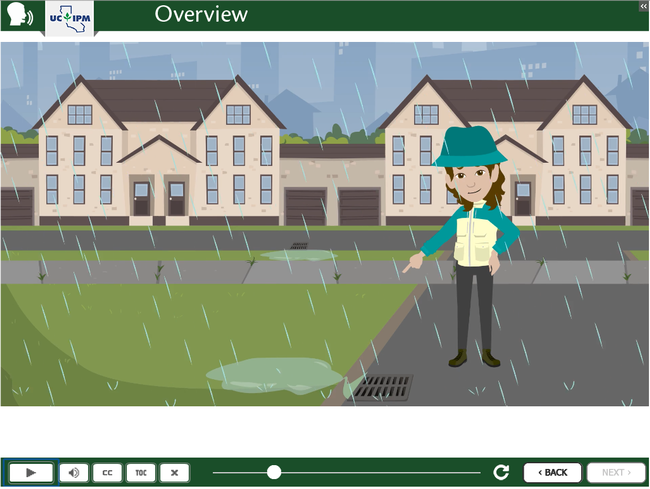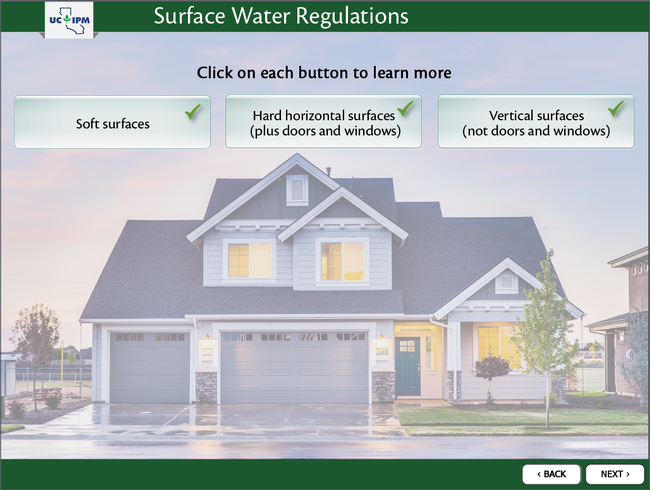New online pesticide-use course aims to protect water quality
Do you know that some pesticides used around homes and other structures are toxic to small aquatic organisms living in nearby streams, creeks, rivers and oceans? The UC Statewide Integrated Pest Management Program has launched a new online course on runoff and surface water protection in California. This course is designed for pest management professionals working primarily in structural pest control or landscape maintenance, but residents and property managers may also find the presented information useful.
Developed by pest management experts from the California Department of Pesticide Regulation (DPR) and the University of California, this course presents information on the Surface Water Protection Regulations that are found in Title 3 of the California Code of Regulations. These regulations were put into place to prevent pesticide runoff into California waterways and to reduce surface water contamination from pyrethroid insecticide use.
In this course, you will learn about the types of pesticide applications that are allowed under the regulations, as well as application types that are prohibited and also application types that are exempt. The course takes a close look at pyrethroids, particularly bifenthrin because of its high use in urban areas, high detection in surface waters, and high toxicity to aquatic organisms. Fipronil, another commonly used ingredient in structural and landscape products, is addressed in the course as well because it causes similar water-quality concerns as pyrethroids. Bifenthrin is used for managing pests such as ants, crickets and lawn grubs. Fipronil is used for ants, roaches and termites.
The Urban Pyrethroid and Fipronil Use: Runoff and Surface Water Protection course has been approved by DPR for a total of 1.5 continuing education units, including 0.5 hour of Pesticide Laws and Regulations and 1.0 hour of Other and by the Structural Pest Control Board for 1.5 hours of Rules and Regulations.
The course takes about 90 minutes to complete. It is divided up into seven sections so a person can stop and resume where they left off. The course is free. To take the course, people need to set up an account at https://campus.extension.org/ then they can enroll. The direct link to the course is https://campus.extension.org/course/view.php?id=2221.
UC IPM currently offers 22 online courses with continuing education units from DPR. Many of these courses are also credited by the California Structural Pest Control Board, Certified Crop Adviser, the Western Chapter of the International Society of Arboriculture, and the Arizona Department of Agriculture.




